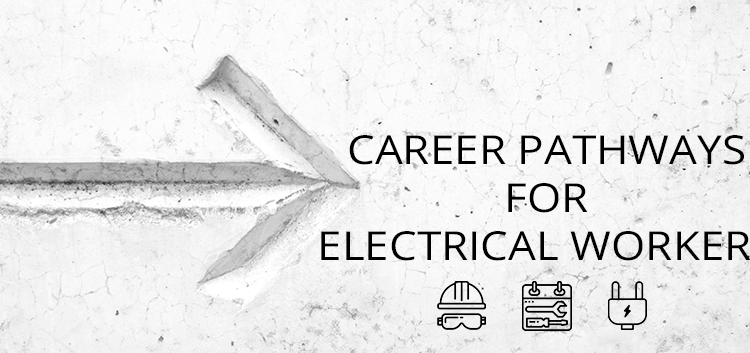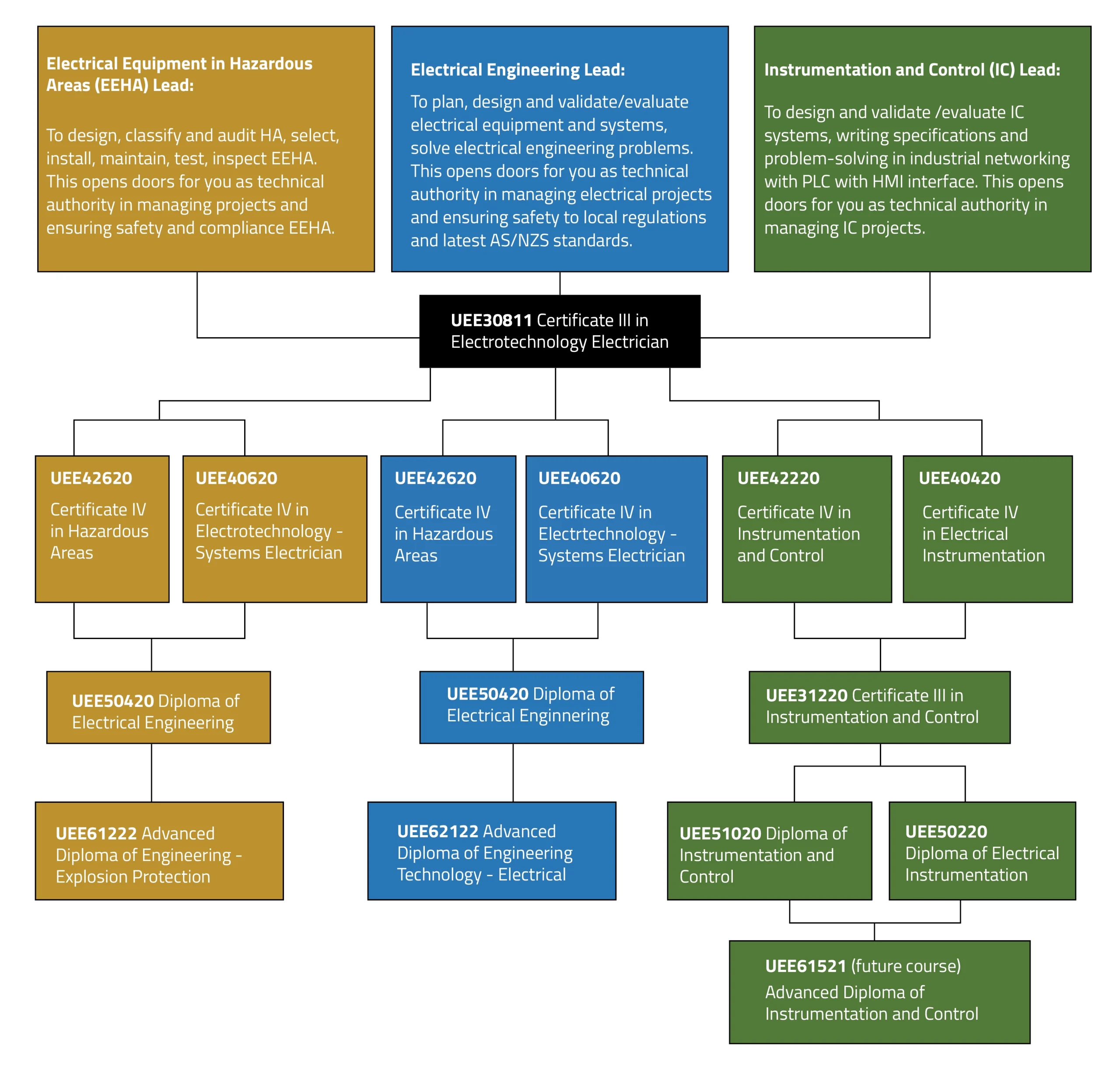Career Pathways for Electricians in Oil, Gas & Mineral Processing Industry
Career Pathways for Electricians in Oil, Gas & Mineral Processing Industry
Dec 29, 2018

The oil and gas and mineral processing industry offers an exciting variety of career opportunities both offshore and in technical disciplines onshore. While working in this sector may be associated with intense shifts and hard-working conditions, it is well known for high salaries, chances to travel the world, as well as working with cutting-edge technologies. Let’s explore different indicative career pathways for electrical workers in the oil and gas and mineral processing industry to become a “Technical Authority”.
Working conditions varies from being in a ‘cushy’ office with personal assistants to working onboard remote platforms or mine sites in extreme weather conditions. The most intense work schedules are probably on the onshore and offshore rigs or at some mineral processing plants in the middle of nowhere. However, the industry and its workers seem to be influenced by economic cycles of resources boom or bust. An industrial construction worker experiences the swings of feast and famine i.e. the wages peak during the boom and touches rock bottom during bust. As the construction phase of major projects finishes and the plant goes into its operation phase, most of the construction workers are made redundant.
The key for the industrial worker to stay gainfully employed is to acquire skills and knowledge that will continue to be in demand during the operation phase of the plant. Despite the tough industry conditions and continual professional development required by an electrical worker needed to stay up-to-date with the current technology used in the industry, the careers are financially rewarding and professionally satisfying, for those people who are willing to work hard.
Different Career Pathways

EEHA Pathway
This career pathway is recommended for anyone involved in the “supervision and compliance” of electrical equipment in hazardous area (EEHA), i.e. HAC, design, equipment and installation specification, planning and managing projects, auditing or inspection of electrical instrumentation and control systems installed in hazardous areas in the chemical, mineral processing and oil and gas industry.
What this Course Delivers?
Traineeship program are available for UEE42622 – Certificate IV in Hazardous Areas – Electrical and UEE50420 – Diploma of Electrical Engineering, upon completion, attracts government funded incentive payments that reduce the financial liability on the employer. Those who already hold UEE42620, on successful completion of the program, the participant will be eligible for dual nationally recognised qualifications:
- UEE50420 – Diploma of Electrical Engineering
- UEE61222 – Advanced Diploma of Engineering – Explosion Protection. It is the highest vocational qualification an electrical worker can get in Australia to become a Technical Authority and Team Leader responsible for ensuring compliance of site EEHA to local regulations and to the latest AS/NZS standards.
Electrical Engineering
This pathway is recommended for anyone/electrical workers involved in assessing and managing risks, undertake design, validation/evaluation and audit functions and provide technical advice related to electrical equipment, instrumentation and control systems installed in hazardous areas in the chemical, mineral processing and oil and gas industry.
What this course delivers?
Traineeship program are available for UEE42622 – Certificate IV in Hazardous Areas – Electrical and UEE40620 Certificate IV in Electrotechnology – Systems Electrician and UEE50420 – Diploma of Electrical Engineering, upon completion, attracts government funded incentive payments that reduce the financial liability on the employer. Those who already hold UEE40420 or UEE40620, on successful completion of the program, the participant will be eligible for dual or triple dual nationally recognised qualifications:
- UEE50420 – Diploma of Electrical Engineering.
- UEE61222 – Advanced Diploma of Engineering Technology – Electrical. Furthermore, it is the highest vocational qualification an electrical worker can get in Australia to become a Technical Authority and Team Leader responsible for ensuring compliance of site electrical equipment and installations to local regulations and latest IEC/AS/NZS standards.
Instrument & Control Pathway
This pathway is recommended for anyone involved in the “design or supervision, evaluation, commissioning, compliance and validation” of process control equipment and systems, r is responsible for managing risk, estimating and managing projects in instrumentation and control systems installed in hazardous areas in the chemical, mineral processing and oil and gas industry.
What this Course Delivers?
Traineeship program are available for UEE42622 – Certificate IV in Hazardous Areas – Electrical and UEE40622 Certificate IV in Electrotechnology – Systems Electrician, upon completion, attracts government funded incentives and/or subsidies. This course delivers the following outcome for those who already hold UEE40420 or UEE40620:
- UEE51020 – Diploma of Instrumentation and Control
- UEE50220 – Diploma of Electrical instrumentation (includes UEE31220 – Certificate III in Instrumentation and Control)
- UEE61521 – Advanced Diploma of Instrumentation and Control. This is the highest vocational qualification an electrical worker can get in Australia to become a Technical Authority and Team Leader. They are also responsible for ensuring compliance of site instrumentation and control equipment and installation to local regulations and latest IEC/AS/NZS standards.
Recent Post
Mar 14, 2024
